Opinion & Analysis
A Closer Look At Decision 18/4
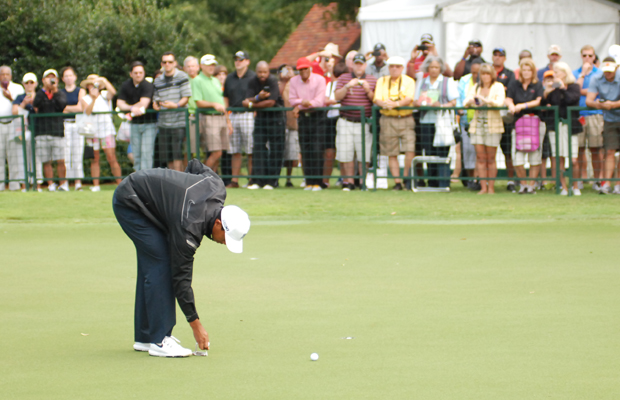
The United States Golf Association and R&A Rules Ltd.– the rule-making bodies of the PGA Tour — announced on Tuesday that players would no longer be penalized when a ball’s movement could only be detected through the use of enhanced technology. In other words, a player will not be penalized if the movement of the ball was not immediately discernible by the naked eye at the time — regardless of video evidence. In a statement issued on Tuesday, the USGA provided:
“New Decision 18/4 will provide that, where enhanced technological evidence shows that a ball has left its position and come to rest in another location, the ball will not be deemed to have moved if that movement was not reasonably discernible to the naked eye at the time. The Decision ensures that a player is not penalized under Rule 18-2 in circumstances where the fact that the ball had changed location could not reasonably have been seen without the use of enhanced technology.”
Decision 18/4 will take effect on Jan. 1, 2014 and significantly reduces the effect of the “call-in rule enforcement” controversy that garnered headlines for much of the summer. One of the highest profile examples occurred during this year’s BMW Championship when a videographer spotted a potential violation involving Tiger Woods and alerted officials. Officials reviewed replays of video and assessed a two-stroke penalty to Woods after his ball was deemed to have moved as he attempted to clear loose impediments around it.
The USGA and the R&A previously adopted rules to minimize a golfer’s risk of being blindsided by disqualification after he had turned in a scorecard due to a video replay showing a violation. In April 2011, the USGA and R&A adopted Decision 33-7/4.5, which authorized committees to waive the disqualification penalty for a breach of Rule 6-6d in narrow circumstances in which the player could not reasonably have been aware of a breach of the rules that later was identified solely through video evidence.
What Does This Mean?
Until the official rollout of Decision 18/4 in January, golf is the only sport where a viewer is able to challenge a ruling. This begs the old “tree in the forest with no one around” question — rather, if a golfer commits a rules violation and nobody notices, including the golfer and the rule enforcers, is it still a rules violation? Decision 18/4 makes it clear that the answer is now an unequivocal “no.”
Ultimately, Decision 18/4 is good for the game of golf. The game of golf is founded on the inherent cornerstone of self-policing and reporting when it comes to rules enforcement. The majority of the time, players will gladly call an infraction on themselves if they realize they have violated the rules. The ruling in Decision 18/4 ensures that the spirit of the game stays intact and players are not penalized for mistakes made in good faith; mistakes that could not have personally observed but for video review. Decision 18/4 also ensures that a golfer will not be blindsided by incurring a two-stroke penalty for an after-the-fact violation ruling through video review after signing his scorecard.
Furthermore, Decision 18/4 ensures fair and equal enforcement of the Rules of Golf throughout the entire playing field. While all of the players are governed by the same rules, the cameras are not on every golfer all of the time. Thus, the players with cameras surrounding them will be under a higher level of scrutiny and review simply for being themselves. Decision 18/4 signals a return to a more uniform review and enforcement process.
What is the Next Step?
The Rules of Golf are quite complicated and even the best good-faith effort by a golfer to police himself may still result in a violation of the rules. If the USGA truly wants the enforcement of the Rules of Golf to be uniform for the entire playing field, it will need to seriously examine adding more rules officials to events. For example, there needs to be a rules official with every group during major tournaments and playoff events. Not only would this provide players with a neutral outside observer that can provide rules positions and bring any violations immediately to the forefront, but would likely minimize the time needed for a ruling to be made.
Perhaps it would even be prudent for the PGA to put a rules official in the video truck to work in concert with the rules officials. This official could monitor the videos and call out any infractions he sees to the officials on the course.
Decision 18/4 is a step in the right direction to ensure that the Rules of Golf are enforced in a uniform manner. However, the onus is now on the PGA to find new ways ensure better rules enforcement over the entire field.
Opinion & Analysis
The 2 primary challenges golf equipment companies face

As the editor-in-chief of this website and an observer of the GolfWRX forums and other online golf equipment discourse for over a decade, I’m pretty well attuned to the grunts and grumbles of a significant portion of the golf equipment purchasing spectrum. And before you accuse me of lording above all in some digital ivory tower, I’d like to offer that I worked at golf courses (public and private) for years prior to picking up my pen, so I’m well-versed in the non-degenerate golf equipment consumers out there. I touched (green)grass (retail)!
Complaints about the ills of and related to the OEMs usually follow some version of: Product cycles are too short for real innovation, tour equipment isn’t the same as retail (which is largely not true, by the way), too much is invested in marketing and not enough in R&D, top staffer X hasn’t even put the new driver in play, so it’s obviously not superior to the previous generation, prices are too high, and on and on.
Without digging into the merits of any of these claims, which I believe are mostly red herrings, I’d like to bring into view of our rangefinder what I believe to be the two primary difficulties golf equipment companies face.
One: As Terry Koehler, back when he was the CEO of Ben Hogan, told me at the time of the Ft Worth irons launch, if you can’t regularly hit the golf ball in a coin-sized area in the middle of the face, there’s not a ton that iron technology can do for you. Now, this is less true now with respect to irons than when he said it, and is less and less true by degrees as the clubs get larger (utilities, fairways, hybrids, drivers), but there remains a great deal of golf equipment truth in that statement. Think about it — which is to say, in TL;DR fashion, get lessons from a qualified instructor who will teach you about the fundamentals of repeatable impact and how the golf swing works, not just offer band-aid fixes. If you can’t repeatably deliver the golf club to the golf ball in something resembling the manner it was designed for, how can you expect to be getting the most out of the club — put another way, the maximum value from your investment?
Similarly, game improvement equipment can only improve your game if you game it. In other words, get fit for the clubs you ought to be playing rather than filling the bag with the ones you wish you could hit or used to be able to hit. Of course, don’t do this if you don’t care about performance and just want to hit a forged blade while playing off an 18 handicap. That’s absolutely fine. There were plenty of members in clubs back in the day playing Hogan Apex or Mizuno MP-32 irons who had no business doing so from a ballstriking standpoint, but they enjoyed their look, feel, and complementary qualities to their Gatsby hats and cashmere sweaters. Do what brings you a measure of joy in this maddening game.
Now, the second issue. This is not a plea for non-conforming equipment; rather, it is a statement of fact. USGA/R&A limits on every facet of golf equipment are detrimental to golf equipment manufacturers. Sure, you know this, but do you think about it as it applies to almost every element of equipment? A 500cc driver would be inherently more forgiving than a 460cc, as one with a COR measurement in excess of 0.83. 50-inch shafts. Box grooves. And on and on.
Would fewer regulations be objectively bad for the game? Would this erode its soul? Fortunately, that’s beside the point of this exercise, which is merely to point out the facts. The fact, in this case, is that equipment restrictions and regulations are the slaughterbench of an abundance of innovation in the golf equipment space. Is this for the best? Well, now I’ve asked the question twice and might as well give a partial response, I guess my answer to that would be, “It depends on what type of golf you’re playing and who you’re playing it with.”
For my part, I don’t mind embarrassing myself with vintage blades and persimmons chasing after the quasi-spiritual elevation of a well-struck shot, but that’s just me. Plenty of folks don’t give a damn if their grooves are conforming. Plenty of folks think the folks in Liberty Corner ought to add a prison to the museum for such offences. And those are just a few of the considerations for the amateur game — which doesn’t get inside the gallery ropes of the pro game…
Different strokes in the game of golf, in my humble opinion.
Anyway, I believe equipment company engineers are genuinely trying to build better equipment year over year. The marketing departments are trying to find ways to make this equipment appeal to the broadest segment of the golf market possible. All of this against (1) the backdrop of — at least for now — firm product cycles. And golfers who, with their ~15 average handicap (men), for the most part, are not striping the golf ball like Tiger in his prime and seem to have less and less time year over year to practice and improve. (2) Regulations that massively restrict what they’re able to do…
That’s the landscape as I see it and the real headwinds for golf equipment companies. No doubt, there’s more I haven’t considered, but I think the previous is a better — and better faith — point of departure when formulating any serious commentary on the golf equipment world than some of the more cynical and conspiratorial takes I hear.
Agree? Disagree? Think I’m worthy of an Adam Hadwin-esque security guard tackle? Let me know in the comments.
@golfoncbs The infamous Adam Hadwin tackle ? #golf #fyp #canada #pgatour #adamhadwin ? Ghibli-style nostalgic waltz – MaSssuguMusic
Podcasts
Fore Love of Golf: Introducing a new club concept

Episode #16 brings us Cliff McKinney. Cliff is the founder of Old Charlie Golf Club, a new club, and concept, to be built in the Florida panhandle. The model is quite interesting and aims to make great, private golf more affordable. We hope you enjoy the show!
Opinion & Analysis
On Scottie Scheffler wondering ‘What’s the point of winning?’

Last week, I came across a reel from BBC Sport on Instagram featuring Scottie Scheffler speaking to the media ahead of The Open at Royal Portrush. In it, he shared that he often wonders what the point is of wanting to win tournaments so badly — especially when he knows, deep down, that it doesn’t lead to a truly fulfilling life.
View this post on Instagram
“Is it great to be able to win tournaments and to accomplish the things I have in the game of golf? Yeah, it brings tears to my eyes just to think about it because I’ve literally worked my entire life to be good at this sport,” Scheffler said. “To have that kind of sense of accomplishment, I think, is a pretty cool feeling. To get to live out your dreams is very special, but at the end of the day, I’m not out here to inspire the next generation of golfers. I’m not out here to inspire someone to be the best player in the world, because what’s the point?”
Ironically — or perhaps perfectly — he went on to win the claret jug.
That question — what’s the point of winning? — cuts straight to the heart of the human journey.
As someone who’s spent over two decades in the trenches of professional golf, and in deep study of the mental, emotional, and spiritual dimensions of the game, I see Scottie’s inner conflict as a sign of soul evolution in motion.
I came to golf late. I wasn’t a junior standout or college All-American. At 27, I left a steady corporate job to see if I could be on the PGA Tour starting as a 14-handicap, average-length hitter. Over the years, my journey has been defined less by trophies and more by the relentless effort to navigate the deeply inequitable and gated system of professional golf — an effort that ultimately turned inward and helped me evolve as both a golfer and a person.
One perspective that helped me make sense of this inner dissonance around competition and our culture’s tendency to overvalue winning is the idea of soul evolution.
The University of Virginia’s Division of Perceptual Studies has done extensive research on reincarnation, and Netflix’s Surviving Death (Episode 6) explores the topic, too. Whether you take it literally or metaphorically, the idea that we’re on a long arc of growth — from beginner to sage elder — offers a profound perspective.
If you accept the premise literally, then terms like “young soul” and “old soul” start to hold meaning. However, even if we set the word “soul” aside, it’s easy to see that different levels of life experience produce different worldviews.
Newer souls — or people in earlier stages of their development — may be curious and kind but still lack discernment or depth. There is a naivety, and they don’t yet question as deeply, tending to see things in black and white, partly because certainty feels safer than confronting the unknown.
As we gain more experience, we begin to experiment. We test limits. We chase extreme external goals — sometimes at the expense of health, relationships, or inner peace — still operating from hunger, ambition, and the fragility of the ego.
It’s a necessary stage, but often a turbulent and unfulfilling one.
David Duval fell off the map after reaching World No. 1. Bubba Watson had his own “Is this it?” moment with his caddie, Ted Scott, after winning the Masters.
In Aaron Rodgers: Enigma, reflecting on his 2011 Super Bowl win, Rodgers said:
“Now I’ve accomplished the only thing that I really, really wanted to do in my life. Now what? I was like, ‘Did I aim at the wrong thing? Did I spend too much time thinking about stuff that ultimately doesn’t give you true happiness?’”
Jim Carrey once said, “I think everybody should get rich and famous and do everything they ever dreamed of so they can see that it’s not the answer.”
Eventually, though, something shifts.
We begin to see in shades of gray. Winning, dominating, accumulating—these pursuits lose their shine. The rewards feel more fleeting. Living in a constant state of fight-or-flight makes us feel alive, yes, but not happy and joyful.
Compassion begins to replace ambition. Love, presence, and gratitude become more fulfilling than status, profits, or trophies. We crave balance over burnout. Collaboration over competition. Meaning over metrics.
Interestingly, if we zoom out, we can apply this same model to nations and cultures. Countries, like people, have a collective “soul stage” made up of the individuals within them.
Take the United States, for example. I’d place it as a mid-level soul: highly competitive and deeply driven, but still learning emotional maturity. Still uncomfortable with nuance. Still believing that more is always better. Despite its global wins, the U.S. currently ranks just 23rd in happiness (as of 2025). You might liken it to a gifted teenager—bold, eager, and ambitious, but angsty and still figuring out how to live well and in balance. As much as a parent wants to protect their child, sometimes the child has to make their own mistakes to truly grow.
So when Scottie Scheffler wonders what the point of winning is, I don’t see someone losing strength.
I see someone evolving.
He’s beginning to look beyond the leaderboard. Beyond metrics of success that carry a lower vibration. And yet, in a poetic twist, Scheffler did go on to win The Open. But that only reinforces the point: even at the pinnacle, the question remains. And if more of us in the golf and sports world — and in U.S. culture at large — started asking similar questions, we might discover that the more meaningful trophy isn’t about accumulating or beating others at all costs.
It’s about awakening and evolving to something more than winning could ever promise.


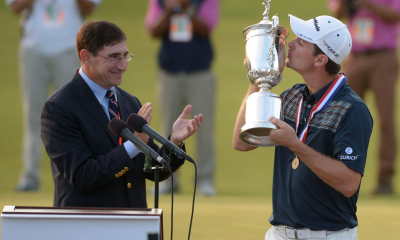

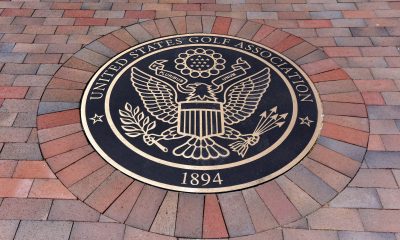



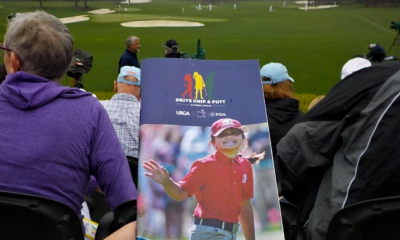

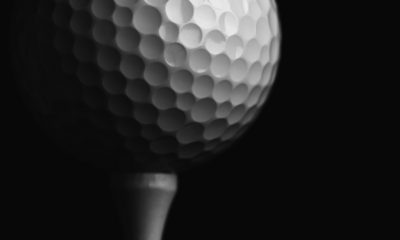

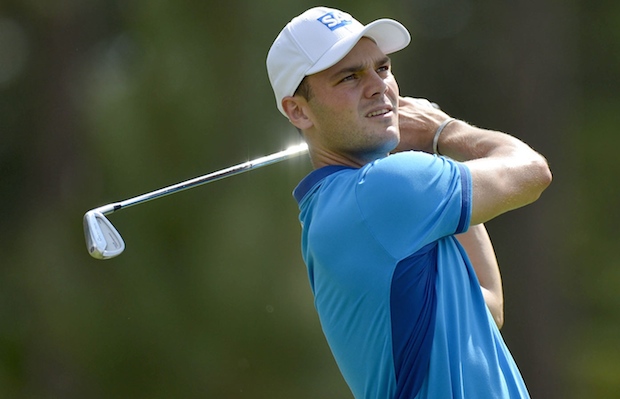








ken
Dec 3, 2013 at 11:43 pm
I agree with the change.
The issue is not the rule in and of itself. Rather the enforcement of the rule using outside influences. Yes, the enhanced video can detect the moved ball. Not the point. The fact is not every player in a tournament field is followed by tv cameras. Some players, save for when they walk past a camera, do not get any tv time.
Until every single player is monitored by some kind of video throughout the entirety of an event, this usage of enhanced video should not have been used in the first place.
Also. In my opinion the various associations governing the game should STOP taking phone calls and electronic messages from viewers.
Rob
Nov 27, 2013 at 6:52 am
Good rule, needs to be expanded to negate all decisions based on advanced technology and viewer call ins. Nick commented “touring pros don’t feel they need to play by the rules”, “TW saw the ball move”, TW decided to cheat”. These are all Nick’s opinions. The last thing golf needs is people like Nick participating in rules decisions.
Patrick
Nov 26, 2013 at 4:00 pm
This is a good decision by the rules committee. Gallery and spectators should not be able to enforce penalty. How is a ball moving a millimeter going to affect the next shot anyway…It’s not. Good riddance.
jc
Nov 25, 2013 at 5:35 pm
that wasn’t a millimeter…it was very plain it moved since the logo moved from west-east to north-south. Not that that would ever bother Tiger. He NEVER sees anything he did as wrong
Rich
Nov 24, 2013 at 5:15 am
The rule wouldnt have been changed if it hadn’t happened to one TW this year.
RG
Nov 22, 2013 at 11:58 pm
Its about time they realized that it is unfair to penalize a player for something that is outside the players ability to detect. Now golfs ruling bodies need to realize that technology could be used to help instead of just hurt a player. Intent plays a part in every governing system on the planet, but not golf. Lets use tech to see if a guy meant to infringe or accidentally did so. Stop with all the hoopla over millimeters and grazing sand on the backswing and lets play golf. Golf is the only game in the world where its greatest championship can be taken away from a champion if that champion does not do good arithmetic. Its silly stupid and it needs to stop.
Hunterdog
Nov 21, 2013 at 7:20 pm
The decision only applies when the movement of the ball could not reasonably be detected without enhanced video; in other words no penalty if player could not know that ball moved. No big deal.
kloyd0306
Nov 21, 2013 at 7:11 pm
Viewers being able to “call in” a possible infraction needs to cease. Such an availability penalizes higher profile players disproportionately. Such rulings and decisions need to be confined to the players and the officials – no one else.
Nick
Nov 24, 2013 at 4:10 pm
Yes I agree that it is unfair that they are subjected to more scrutiny since they are on TV more. They also have more sponsors and more money because they are better and more popular players. So I feel that the exposure is point is moot. The real issue is why touring PROS don’t feel they need to play by the rules. If the ball moves because of you, there is no grey area. TW was looking right at the ball and tried to move the stick to help his lie. The ball moved he saw it and decided to CHEAT the game. Maybe if he didn’t hit his ball into the crap he would not need to cry to the commish.
Bout time
Nov 21, 2013 at 4:21 pm
Take that Chamblee!!!
ken
Dec 3, 2013 at 11:47 pm
Just a minute…Tour players don’t feel they should have to play by the rules?
From where did you get this information?
Nick, unless you can provide proof of that accusation being true, I suggest you delete your post and refrain form making such baseless charges.
Dan
Nov 21, 2013 at 3:38 pm
I like the new rule. Currently, higher profile players are at a disadvantage for incidents similar to the Tiger “wobble” at the BMW. Those guys are going to have many more cameras rolling on them. The “call in” rule should only have been implemented if every shot of every player was captured with the same level of detail.
yo!2
Nov 21, 2013 at 2:05 pm
what about the stick that was moved out of the way to get a clear shot that caused the ball to move a millimeter?
yo!
Nov 21, 2013 at 1:03 pm
It’s a good rule. A ball moving a millimeter isn’t going to make a difference.
Jack
Nov 21, 2013 at 10:41 pm
Yeah, there needs to be a material difference clause in there. You moved your ball a millimeter? It’s ok no violation since it doesn’t make a difference, and you didn’t intend to do it. You move the ball 5 inches back? Yeah you’re DQed. Tamping a spike mark? Ouch.
ken
Dec 3, 2013 at 11:50 pm
A player does not suffer disqualification for moving his ball or causing it to move at address. He is disqualified only if he does not penalize himself the appropriate number of strokes per the rule AND signs his scorecard without making the correction.
David Sefton
Nov 21, 2013 at 12:52 pm
TV companies will not stop showing enhanced coverage of these incidents. So, persistent offenders with ‘poor naked eye vision’ will soon be highlighted.